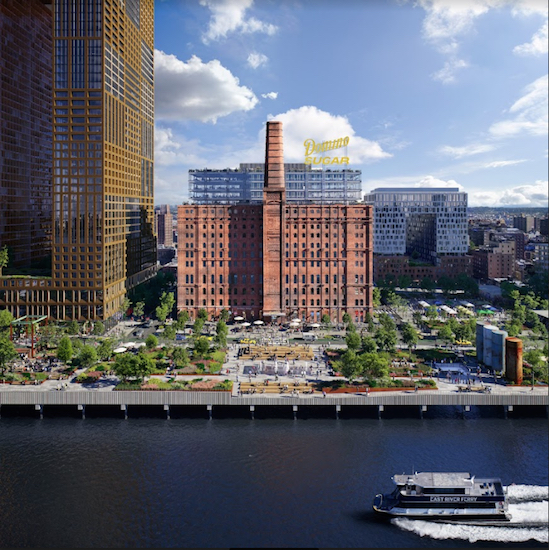Developer releases big plans for Domino Park in Williamsburg
Six-acre space to preserve Brooklyn’s industrial past

Real estate development firm Two Trees Management announced on Wednesday that Domino Park is on track to open next summer. The quarter-mile-long green space will run along the Williamsburg waterfront in front of the landmarked Domino Sugar Refinery. Renderings by MIR
How sweet it is!
Real estate development firm Two Trees Management announced on Wednesday that Domino Park would open next summer in front of the landmarked Domino Sugar Refinery.
The 6-acre, quarter-mile-long green will reclaim the waterway as a public space along Williamsburg’s coast.
